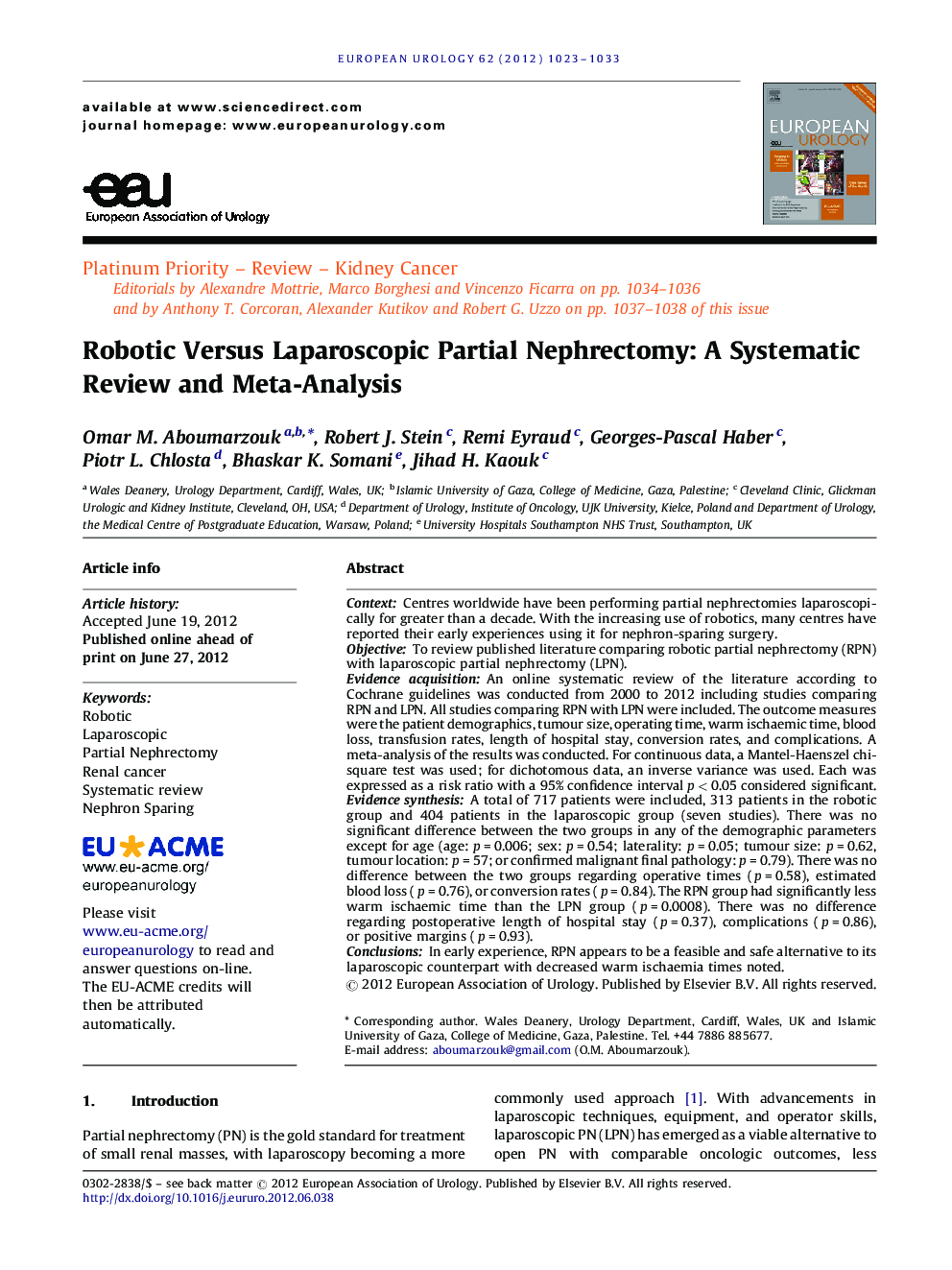| Article ID | Journal | Published Year | Pages | File Type |
|---|---|---|---|---|
| 3922731 | European Urology | 2012 | 11 Pages |
ContextCentres worldwide have been performing partial nephrectomies laparoscopically for greater than a decade. With the increasing use of robotics, many centres have reported their early experiences using it for nephron-sparing surgery.ObjectiveTo review published literature comparing robotic partial nephrectomy (RPN) with laparoscopic partial nephrectomy (LPN).Evidence acquisitionAn online systematic review of the literature according to Cochrane guidelines was conducted from 2000 to 2012 including studies comparing RPN and LPN. All studies comparing RPN with LPN were included. The outcome measures were the patient demographics, tumour size, operating time, warm ischaemic time, blood loss, transfusion rates, length of hospital stay, conversion rates, and complications. A meta-analysis of the results was conducted. For continuous data, a Mantel-Haenszel chi-square test was used; for dichotomous data, an inverse variance was used. Each was expressed as a risk ratio with a 95% confidence interval p < 0.05 considered significant.Evidence synthesisA total of 717 patients were included, 313 patients in the robotic group and 404 patients in the laparoscopic group (seven studies). There was no significant difference between the two groups in any of the demographic parameters except for age (age: p = 0.006; sex: p = 0.54; laterality: p = 0.05; tumour size: p = 0.62, tumour location: p = 57; or confirmed malignant final pathology: p = 0.79). There was no difference between the two groups regarding operative times (p = 0.58), estimated blood loss (p = 0.76), or conversion rates (p = 0.84). The RPN group had significantly less warm ischaemic time than the LPN group (p = 0.0008). There was no difference regarding postoperative length of hospital stay (p = 0.37), complications (p = 0.86), or positive margins (p = 0.93).ConclusionsIn early experience, RPN appears to be a feasible and safe alternative to its laparoscopic counterpart with decreased warm ischaemia times noted.
